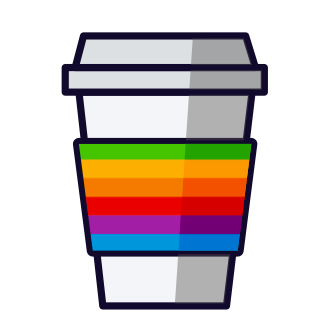Bring Dashboard Back
The time is right for Dashboard, a feature ahead of its time, to make a glorious comeback on macOS.
Apple is on the cusp of an exciting opportunity to resurrect the Dashboard, and in doing so, upgrade Widgets with the capabilities and space they deserve.
Dashboard
Apple introduced Widgets inside Dashboard, a marquee feature of Mac OS X Tiger. Dashboard consisted of a series of interactive widgets that, when called on, overlaid onto the user's screen to present snippets of information. Apple had several first-party Widgets available at launch, including a calculator, world clocks, flight tracker, dictionary, unit converter, weather, stocks, calendar, and more. What's more, Apple made it easy for third parties to develop Widgets and even launched a webpage directory promoting them. Widgets could be arranged anywhere on the Dashboard overlay, easily removed, and more could be added by accessing the Widget panel.
A number of the stock widgets Apple included with Dashboard at launch including: Tile Game, Yellow Pages, Translation, Stickies, World Clock, Music Player, Calculator, Dictionary, Flight Tracker, Weather, Converter, Calendar, Address Book, & Stocks. - Images from Apple.com
But for whatever reason, Dashboard never really caught on. Maybe it was a feature ahead of its time, but Dashboard never saw a lot of third-party love, and even Apple seemed lackadaisical in promoting or updating their Widgets. When Mac OS X 10.7 launched in 2011, Dashboard stopped being an overlay and became a separate page accessed via a swipe gesture, hotkey, or the LaunchPad. By OS X 10.10, Dashboard was disabled by default, and in macOS 10.15, It was removed from the OS entirely.
Right Place, Wrong Time
On the surface, Dashboard Widgets sound like a killer feature for Apple; they're lightweight interactive apps that prominently display information-rich snippets. They offered more functionality and looked better than Widgets available today, so what went wrong?
One of my biggest gripes about widgets on MacOS is how unimportant their placement and accessibility currently is.
Many factors contributed to the success of widgets in iOS 14. First, Widgets became more customizable and provided users with the content they care about. Second, Widgets became more prominent; rather than being relegated to the side panel, Widgets adorned a user's Home Screen however they liked (a 'however they liked' that remains strictly restrained by Apple as to the placement and size of said Widgets). And lastly, third-party apps flooded the App Store allowing for the creation of custom Widgets which furthered the degree of personalization available. This personalization for content, coupled with increased visibility and an enthusiastic developer base, propelled Widgets to popularity. With Dashboard on Mac OS X, Apple did little to promote or enhance the platform beyond its initial release, and widgets were slowly set adrift into a sea of forgotten features. But despite the current popularity of Widgets, what continues to handicap them back is their lack of interactivity and, specific to macOS, their accessibility by having them remain locked to a side panel & squashed under Notifications.
Bring Dashboard Back!
Apple has the golden ability to address these complaints in upcoming versions of their OS and further enhance the appeal and utility of Widgets.
Widgets need to be interactive, and they need the space to be interacted with! In this mockup, Dashboard overlays the desktop with Widgets to show various bits of information - from music controls and sticky notes to maps and weather.
Interactivity
Interactivity had been a mainstay of Widgets up until iOS 14, when they were rebuilt in SwiftUI, so imagining a development arc where this feature is restored is entirely possible and reasonable. Rekindling interactivity opens up the OS to new widgets (e.g., calculators, converters, translation), and additional functionality to existing Widgets: controlling audio, saving a link, completing a todo, adding a quick reply, or bookmarking a News story within the Widget itself.
More Space
Out of sight became out of mind in the case of Widgets; if people can't see them or personalize them, they won't use them. Widgets' prominent and open placement on the iPhone on iOS 14 proved so popular that Apple has since brought the feature to the iPad in iPadOS 15. But on the Mac, Widgets remain hidden in the Notification Center, stuffed under an endless pile of notifications. I constantly look up widgets on the iPhone and iPad, and I constantly forget that they exist on the Mac.
In this mockup, Dashboard Widgets live persistently on the desktop, just like they do on the iPhone and iPad.
I would much prefer to see widgets rejigged on the Mac as a Dashboard-like overlay for the desktop, easily called in and dismissed as needed. To enhance Widgets further, I would also like the option of having some Widgets remain persistently on the desktop just like they function on iOS today - as a way of further adorning my desktop with content I want to see and be reminded about. People employ widgets because they want routine exposure to information - why should that convention be any different on the Mac?
In Sum
I hope we see Apple do more in the Widget space - enabling interactivity and adding prominence to this popular feature! And I'm not alone in this idea; numerous bloggers (512 Pixels | Numeric Citizen) have recently posted about their desire to see a revitalization of Widgets and the return of Dashboard to the Mac. Widgets have never been more relevant or personal to the operation of Apple devices as they are today, and I hope Apple capitalizes on this golden opportunity & brings back this beloved feature.





